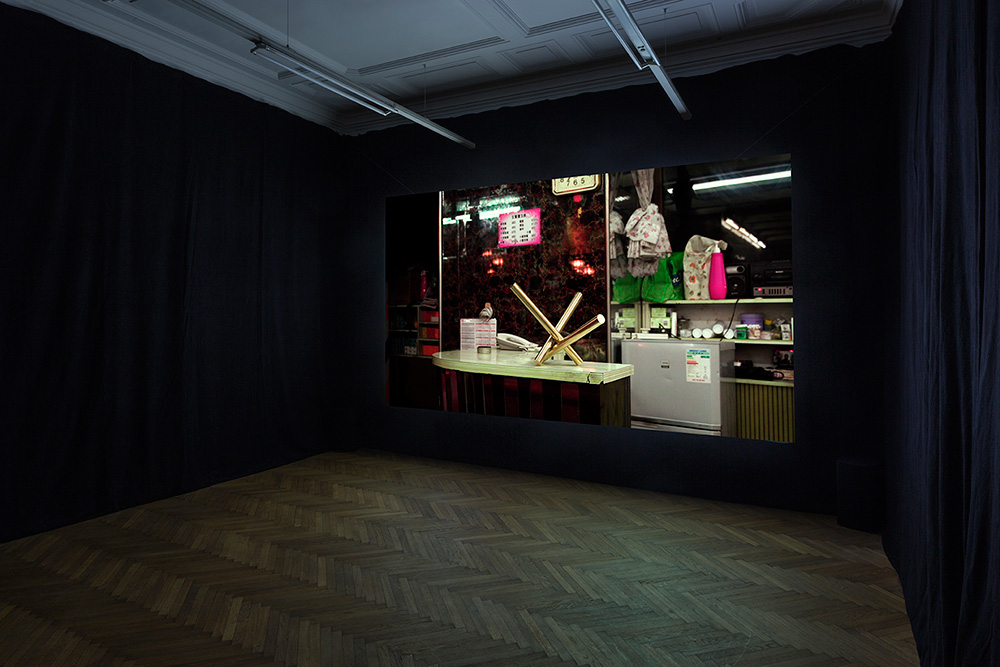
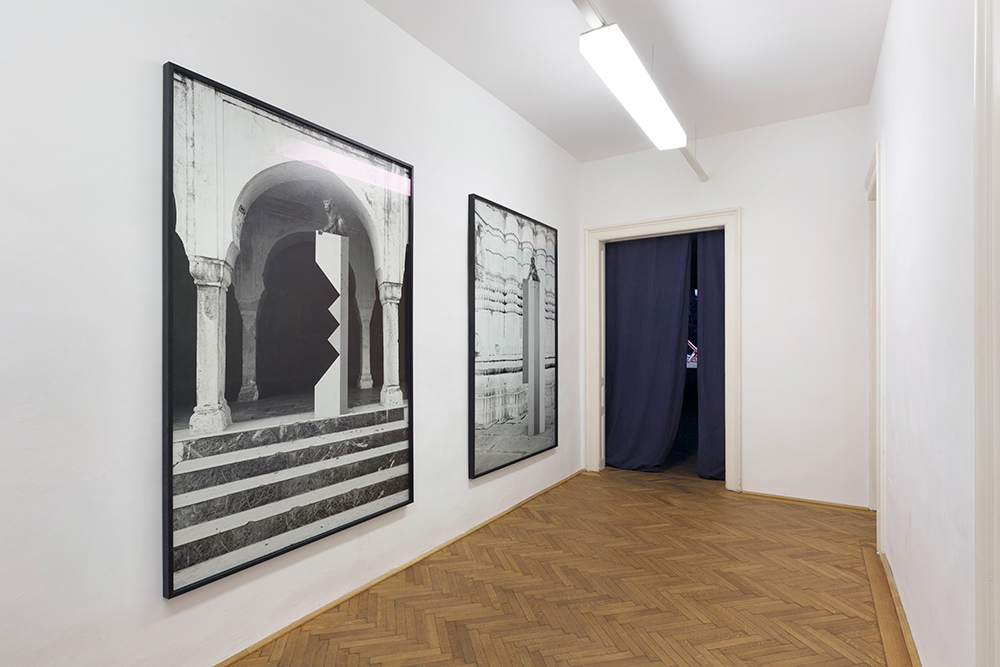
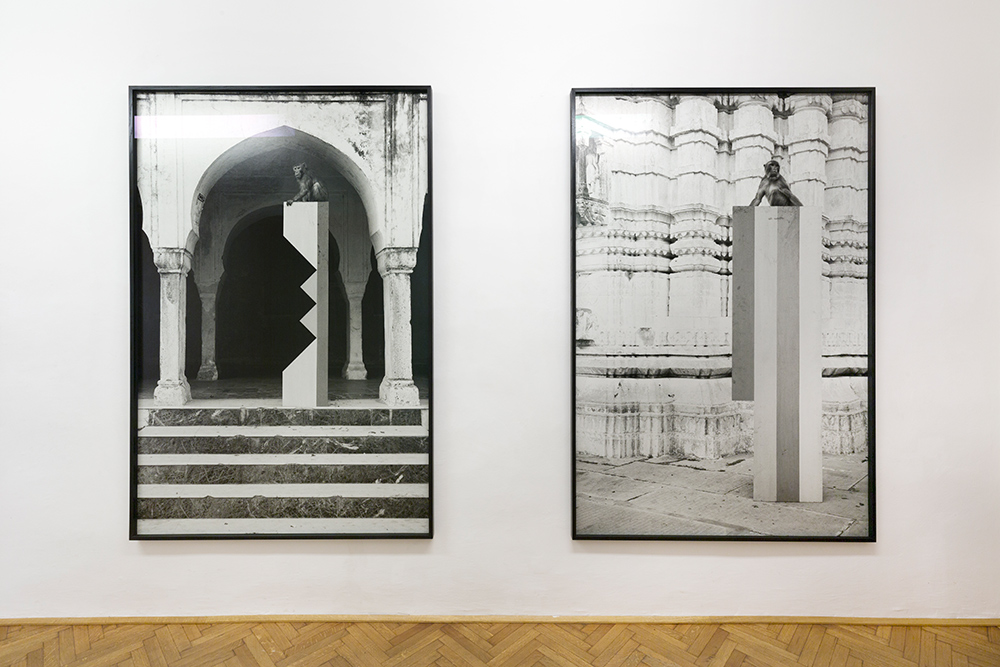
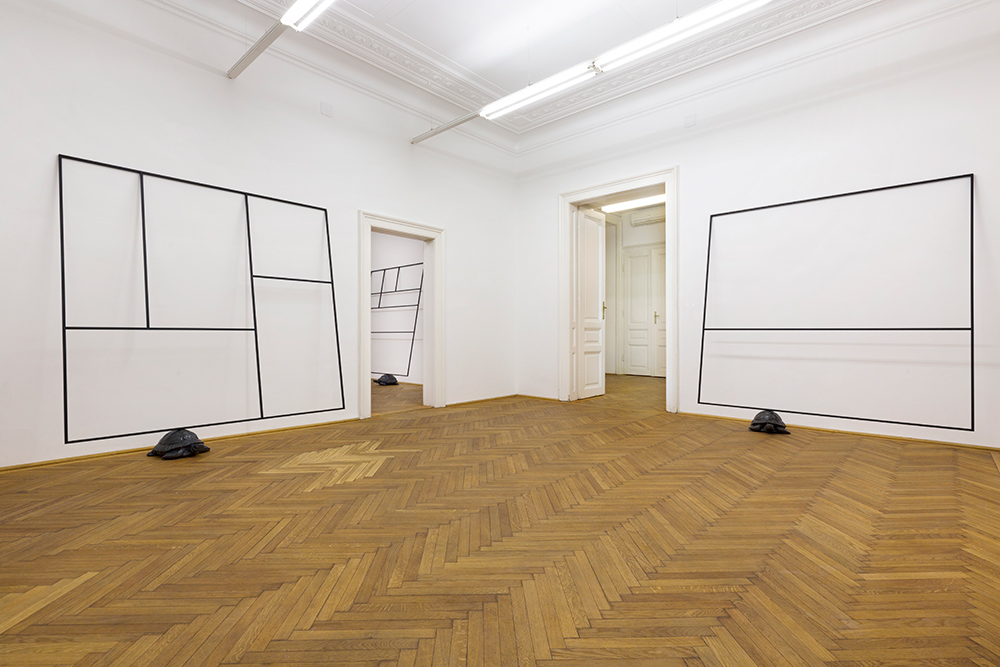
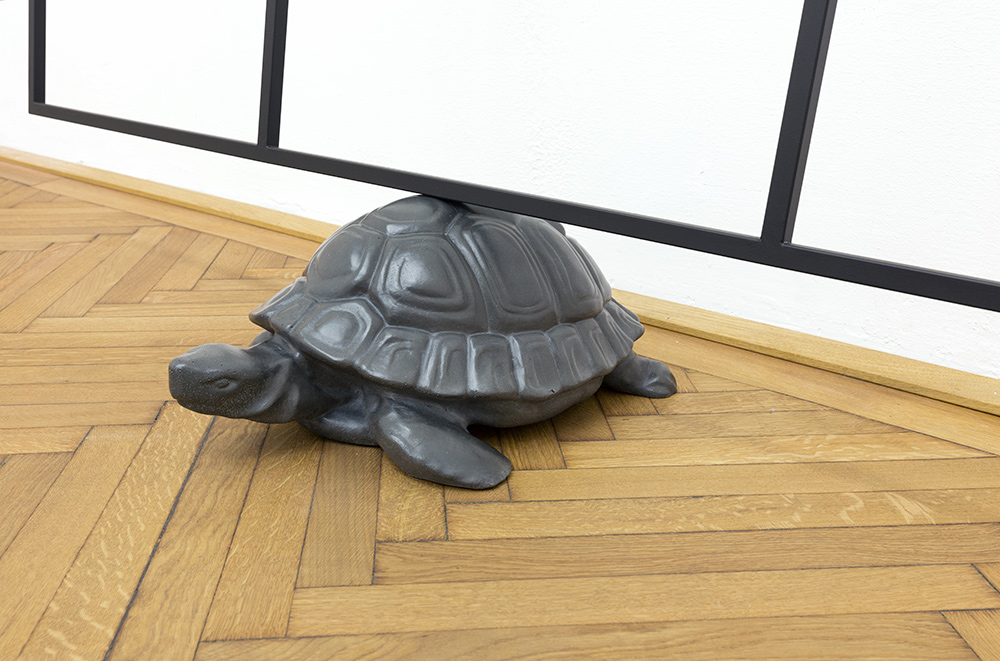
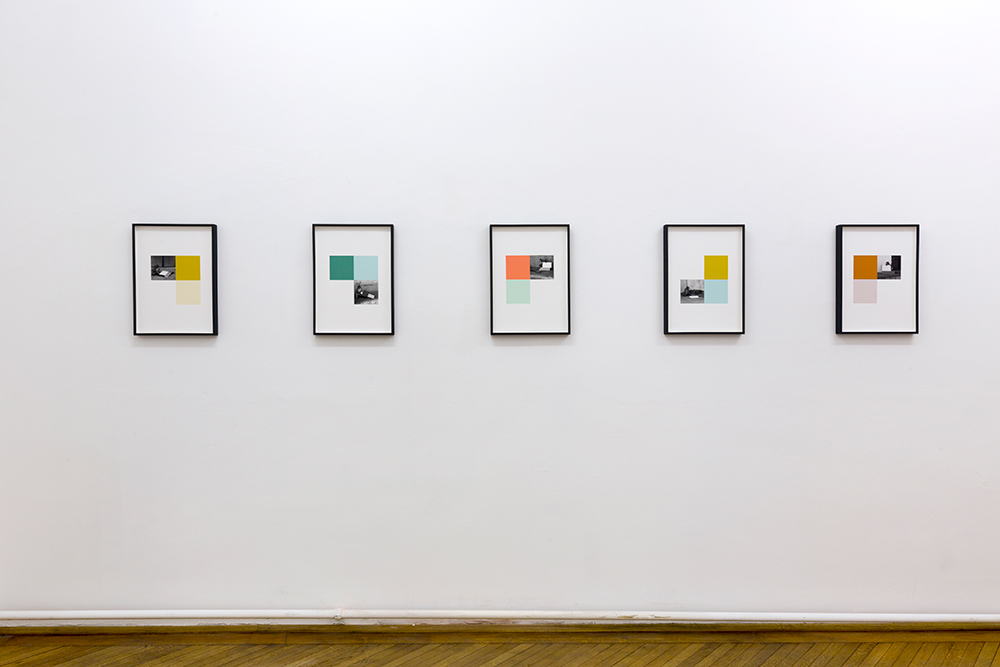
KAY WALKOWIAK. REALM OF OBJECTS
Zeller van Almsick, Vienna (AT)
28.11.2019 – 11.01.2020
Curator:
Zeller van Almsick
Developed by Le Corbusier in 1948, the Modulor is an anthropometric system of proportions that seeks to mediate between two incompatible units of length: the Imperial System, based on feet and inches, and the Metric System. The Modulor - a combination of body measurements, the Fibonacci series, and the Golden Section - also represents an attempt to give architecture a human-oriented, universally applicable mathematical order. In its harmonious proportions, the geometry generated by the Modulor represents a design philosophy that seeks to develop buildings from the needs of their inhabitants. In the Unité in Marseilles, Le Corbusier's famous "living machine," the Modulor was applied consistently: the human being is not only the functional focus, but also becomes the measure of all things. However, this human being is not an individual, but a male subject conceived in universal terms, who has internalized Western design norms and represents them ideally.
In Untitled (Eternal Beauty), Kay Walkowiak has created a series of geometric grid structures in steel that echo the proportions of the Modulor. Enclosed in a square, the surfaces of verticals and horizontals embody the idea of "pure form" in its claim to absoluteness. To the materialization of this mathematical abstraction, however, Walkowiak adds a figurative element: each metal grid stand on a turtle made of cast stone. In Hinduism, the turtle Akupāra (Sanskrit: अकूपार) is considered a wise animal, bearer of the world and outlasting humankind. In China and Japan, tombstones are placed on turtles, because they symbolize the transition between worlds. Le Corbusier's theory of harmony as a paradigm of timeless modernist aesthetics balances, as it were, on a pedestal of East Asian thought: two incompatible systems statically seek a compromise. Taoism also strives to create harmony and a corresponding energy field through architecture. Geometrically designed windows, for example, mark a threshold architecture that is supposed to keep spirits away. Grid structures, such as those following Le Corbusier's master plan or those influenced by Feng Shui, are, however, ultimately and above all, culturally shaped carriers of meaning - whose respective self-understanding status fades when transferred locally and is overlaid by new connotations.
In his exhibition Realm of Objects, Kay Walkowiak pursues intensively his research into the effects of the large-scale project of modernity, its colonial gestures, and the transformations to which it is subject in the countries of the global South. A formal language originally conceived as universal undergoes recoding, is amalgamated with local traditions, or even revised by philosophies and approaches based on other premises. "Modernity" presents itself as a differentiated, pluri-structured concept that, as a world formula, failed early on in its own claim.
This has also been experienced, much to their regret, by those icons of 20th century sculpture that are now no longer at home in museums or private collections, but instead eke out a mediocre existence in tiny apartments, stores, or hair salons. Once the stars of the international art world, they ended up in Hong Kong, where no one seems to care about their glamorous past lives. Sculptures by Alexander Calder, Sol Le Witt, David Smith, Constantin Brâncusi and Max Bill, soliloquise about their lives in the video Anonymous Objects, raging at their creators and despairing at their questionable status as representatives of a Western canon of art. The once auratic object - that recapitulates its chequered fate in the first person singular - was bought at an auction or sold far below its value. It feels betrayed and misunderstood, unprotected beyond the safe walls of the white cube. But it is not only the change of location that seriously damaged its self-image. How could it be that everyone believed the abstract form to be universally readable? Staged it as self-explanatory? The camera wanders along endless skyscraper facades, looks down narrow alleys, pauses on the faded splendor of bygone times. Narrowness, improvisation, even poverty, do not fit at all with the sculptures, now obviously out of place, in the wrong biotope. They have to cope with a different concept both of space and of time: instead of the Western idea of timelessness, a notion of emergence and regression prevails, and with it a certain acceptance of constant decay. They may stand on a balcony, wait in a corridor, or linger on a table in a corner - like things left somewhere that have, at some point, become part of the furnishing.
This process of de-artification, told in the style of a "novel of circulation" (a genre that tells of the fate of things passed from one owner to the next, from the perspective of the object), is a concise example of a migration of form beyond exoticism. The foreign object is not a spectacular work, but simply an abstract geometric something without a proximate function. A thing among things. In this sense, the monkey in the black-and-white photographs of the series Rituals of Resistance can also take possession of sculptures and, sitting on geometrically colorful constructs, degrade works of art into pedestals on which he is enthroned as if he were the actual subject of the work. Taken in a temple complex, the sculptures become mere relics, staffage. And since they inevitably remain mute, it hardly matters what ideology of ideal form may once have been inscribed in them. In the image that presents itself to us, they have not only lost their color, but also the context that the modernist project needs in order to behave as hegemonically as it once did. But this is not a loss. The revised view brings to light a different beauty that lies in the contrast of mutually dependent opposites; a different reading that does not exclude, but rather changes the backdrop and thus the perspective as well.
Text: Vanessa Joan Mueller, Vienna 2019
Photos: (c) Matthias Bildstein
In Untitled (Eternal Beauty), Kay Walkowiak has created a series of geometric grid structures in steel that echo the proportions of the Modulor. Enclosed in a square, the surfaces of verticals and horizontals embody the idea of "pure form" in its claim to absoluteness. To the materialization of this mathematical abstraction, however, Walkowiak adds a figurative element: each metal grid stand on a turtle made of cast stone. In Hinduism, the turtle Akupāra (Sanskrit: अकूपार) is considered a wise animal, bearer of the world and outlasting humankind. In China and Japan, tombstones are placed on turtles, because they symbolize the transition between worlds. Le Corbusier's theory of harmony as a paradigm of timeless modernist aesthetics balances, as it were, on a pedestal of East Asian thought: two incompatible systems statically seek a compromise. Taoism also strives to create harmony and a corresponding energy field through architecture. Geometrically designed windows, for example, mark a threshold architecture that is supposed to keep spirits away. Grid structures, such as those following Le Corbusier's master plan or those influenced by Feng Shui, are, however, ultimately and above all, culturally shaped carriers of meaning - whose respective self-understanding status fades when transferred locally and is overlaid by new connotations.
In his exhibition Realm of Objects, Kay Walkowiak pursues intensively his research into the effects of the large-scale project of modernity, its colonial gestures, and the transformations to which it is subject in the countries of the global South. A formal language originally conceived as universal undergoes recoding, is amalgamated with local traditions, or even revised by philosophies and approaches based on other premises. "Modernity" presents itself as a differentiated, pluri-structured concept that, as a world formula, failed early on in its own claim.
This has also been experienced, much to their regret, by those icons of 20th century sculpture that are now no longer at home in museums or private collections, but instead eke out a mediocre existence in tiny apartments, stores, or hair salons. Once the stars of the international art world, they ended up in Hong Kong, where no one seems to care about their glamorous past lives. Sculptures by Alexander Calder, Sol Le Witt, David Smith, Constantin Brâncusi and Max Bill, soliloquise about their lives in the video Anonymous Objects, raging at their creators and despairing at their questionable status as representatives of a Western canon of art. The once auratic object - that recapitulates its chequered fate in the first person singular - was bought at an auction or sold far below its value. It feels betrayed and misunderstood, unprotected beyond the safe walls of the white cube. But it is not only the change of location that seriously damaged its self-image. How could it be that everyone believed the abstract form to be universally readable? Staged it as self-explanatory? The camera wanders along endless skyscraper facades, looks down narrow alleys, pauses on the faded splendor of bygone times. Narrowness, improvisation, even poverty, do not fit at all with the sculptures, now obviously out of place, in the wrong biotope. They have to cope with a different concept both of space and of time: instead of the Western idea of timelessness, a notion of emergence and regression prevails, and with it a certain acceptance of constant decay. They may stand on a balcony, wait in a corridor, or linger on a table in a corner - like things left somewhere that have, at some point, become part of the furnishing.
This process of de-artification, told in the style of a "novel of circulation" (a genre that tells of the fate of things passed from one owner to the next, from the perspective of the object), is a concise example of a migration of form beyond exoticism. The foreign object is not a spectacular work, but simply an abstract geometric something without a proximate function. A thing among things. In this sense, the monkey in the black-and-white photographs of the series Rituals of Resistance can also take possession of sculptures and, sitting on geometrically colorful constructs, degrade works of art into pedestals on which he is enthroned as if he were the actual subject of the work. Taken in a temple complex, the sculptures become mere relics, staffage. And since they inevitably remain mute, it hardly matters what ideology of ideal form may once have been inscribed in them. In the image that presents itself to us, they have not only lost their color, but also the context that the modernist project needs in order to behave as hegemonically as it once did. But this is not a loss. The revised view brings to light a different beauty that lies in the contrast of mutually dependent opposites; a different reading that does not exclude, but rather changes the backdrop and thus the perspective as well.
Text: Vanessa Joan Mueller, Vienna 2019
Photos: (c) Matthias Bildstein